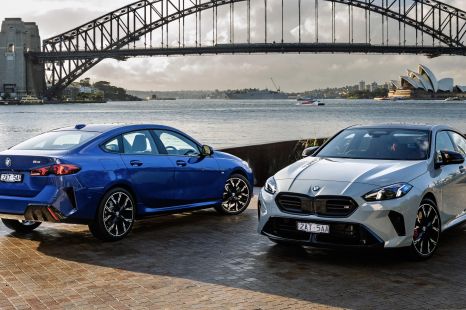

Max Davies
2025 BMW 2 Series Gran Coupe review
4 Months Ago
The Mach 1 isn't just an engineering triumph, it's likely one of the best behind-the-wheel experiences you're going to have for under $90,000.

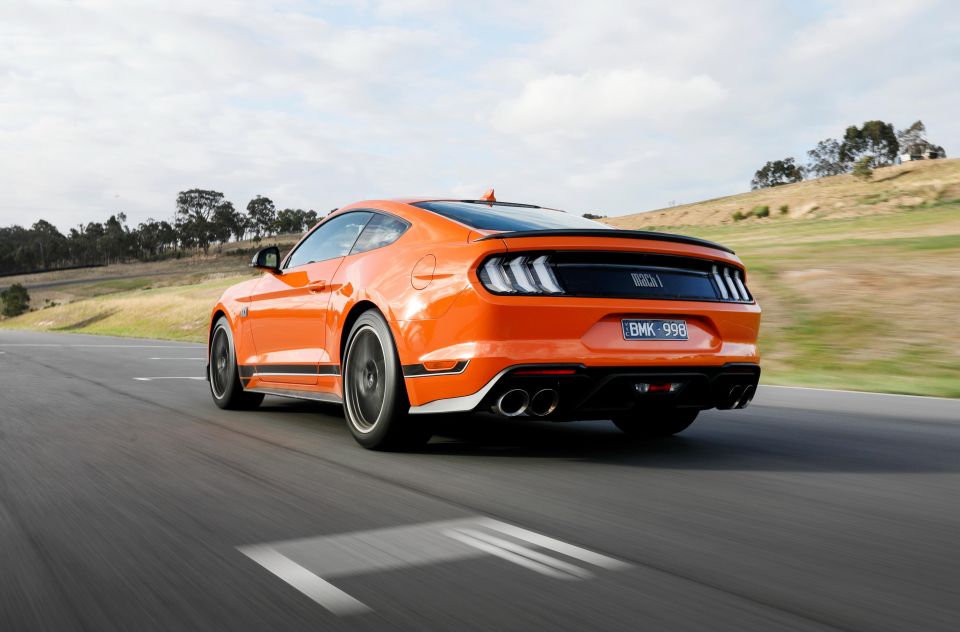

Senior Road Tester
New from
$51,690
excl. on-roads

Senior Road Tester
New from
$51,690
excl. on-roads


Senior Road Tester
New from
$51,690
excl. on-roads

Senior Road Tester
New from
$51,690
excl. on-roads
Quickly see how this car stacks up against its competition. Select any benchmark to see more details.
Where expert car reviews meet expert car buying – CarExpert gives you trusted advice, personalised service and real savings on your next new car.
Given I’m the proud owner of the limited-build 2018 Ford Mustang Bullitt, and my younger brother has an original 1969 Mach 1 tucked away in his garage, I reckon I’m as well placed as anyone to call judgement on the latest iteration of what is a storied badge in Ford’s muscle car heritage – the 2021 Ford Mustang Mach 1.
Apparently, Ford first used the name ‘Mach 1’ as early as 1959 for a concept it called the Levacar Mach 1, which used a cushion via three ‘Levapads’ as propulsion.
Makes perfect sense, given Ford tried to do a product placement deal with the producers of Back to the Future for the Mustang as the star car. As history shows, the director went with the DMC DeLorean.

Nevertheless, the original Ford Mustang Mach 1 muscle car launched to the USA in 1969, along with a raft of performance-focused Mustangs including the GT, Boss 302, Boss 429, Shelby GT350 and Shelby GT500. So popular was the ‘Mach 1’ in bridging the gap between the GT and hardcore Shelby models, the GT badge was subsequently dropped from the line-up.
The latest Mach 1 subscribes to the same brand values as its predecessors, though, it’s arguably a more specialised weapon more capable on and off the track.
Ford bills it as “the most track-focused Mustang ever sold in Australia”, and that’s no marketing spin. No surprise then all 700 examples earmarked for Australia were sold before a single vehicle hit the showroom floor.
Effectively, the Mach 1 is a parts-bin special, with a raft of above-and-below-skin upgrades from the likes of the Bullitt, GT350 and GT500, but the end result being greater than the sum of its parts.
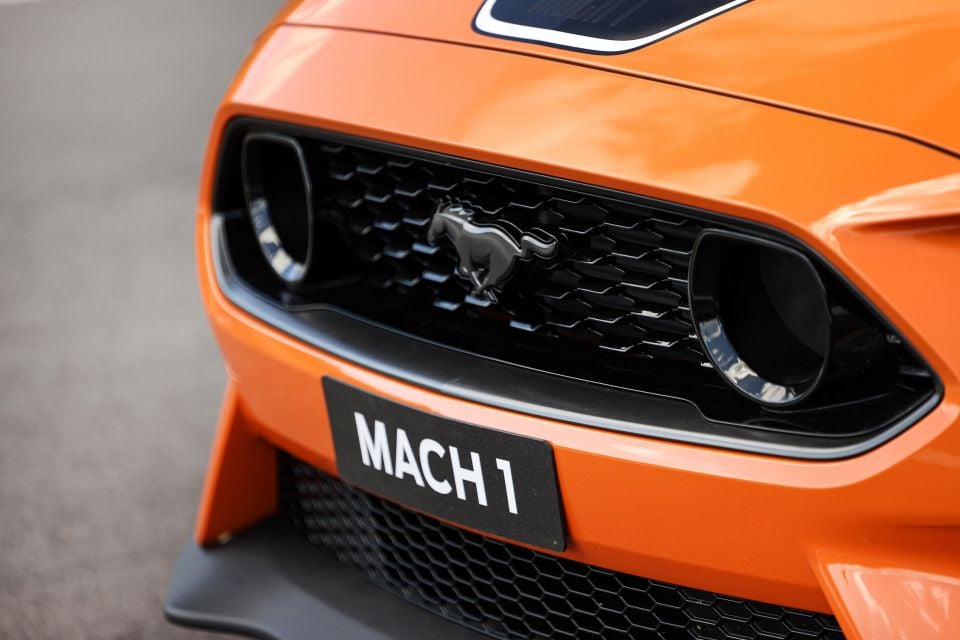
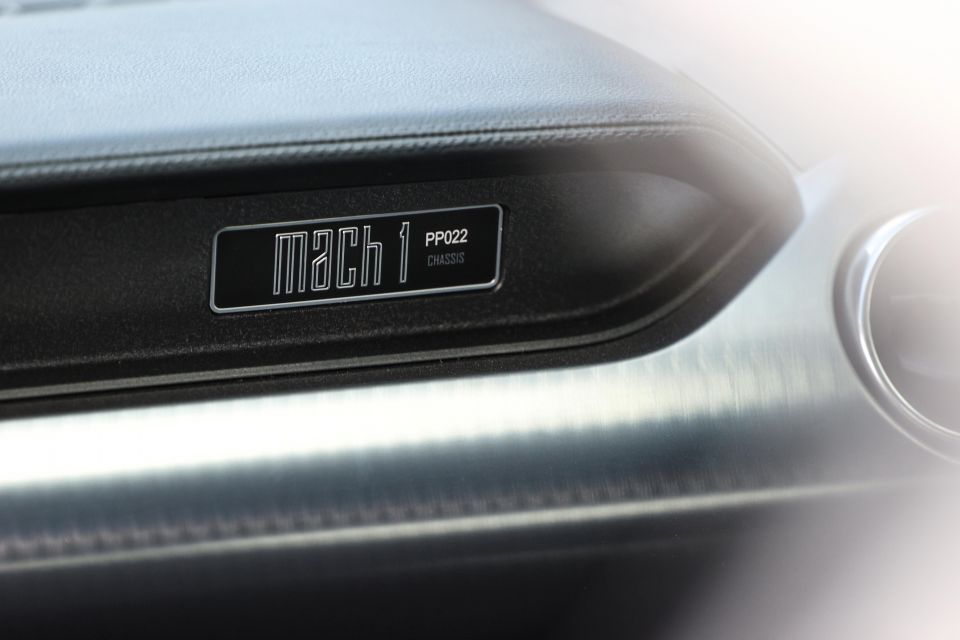

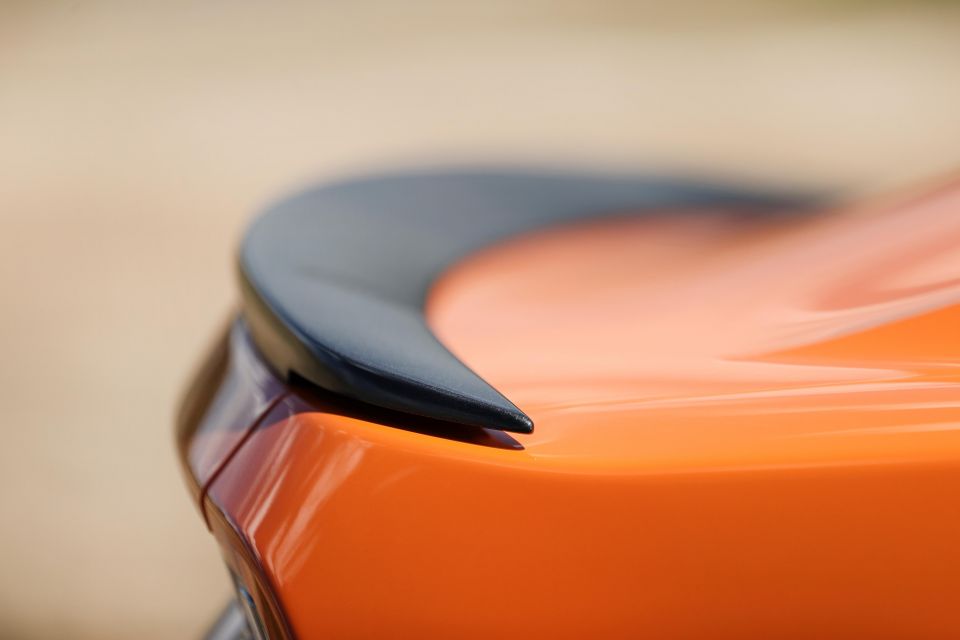
It starts with the design. While the latest Mach 1 might pay homage to its original ’69 ancestor, it’s as much about function as it is about form. Specifically, aerodynamics.
Apart from its unique two-piece upper grille and new lower grille, the front splitter and a rear diffuser sourced from the Shelby GT500 are responsible for 22 per cent greater downforce compared with the stock Mustang GT.
Ford also claims the single-deck rear spoiler has been matched to the front aero effects for the prefect lift balance from to back. Even the adaptive dampers have been recalibrated to work with the Mach 1’s stiffer front springs and anti-roll bars. It’s all about minimising dive and lift under acceleration and braking on track.
Even the underbody has been designed with a longer under-tray and special fins that direct cool air to the brakes. Oh, and there’s a more powerful brake booster up front for fade-free braking on track. Everywhere you look, the Mach 1 has been tweaked with on-track performance in mind.

If only you could get your hands on one, the price would be $83,365 before on-road costs and options. There’s no premium for the auto transmission.
Granted, it’s a hefty price to pay over the standard GT Fastback, priced from $64,190 for the manual and $67,190 for the auto, but I paid around the same for my Bullitt in 2018.
There’s an Appearance Pack ($1000) available on Fighter Jet Grey painted versions only that adds unique black and orange bonnet and side stripes, orange brake calipers and seatback accents.
Recaro leather sports seats ($3000) might seem a tad on the high side, but consider them a mandatory addition, regardless of your driving style. They’re simply more comfortable and offer better support for your spine, but you lose heating and cooling functions, which are included in the standard pews.
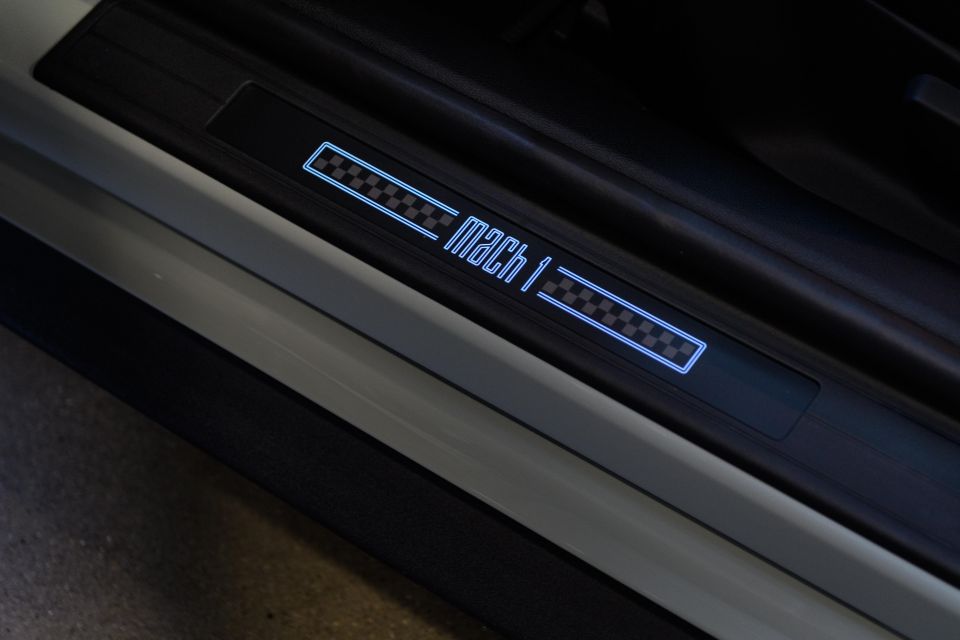
If you want the ‘Special Paint’ – that’s every colour bar solid white – customers can choose from five with bonnet and side stripe combinations including Fighter Jet Grey with Satin Black/Reflective Orange stripes, Shadow Black and Oxford White with Satin Black/Red stripes, or Velocity Blue and Twister Orange with Satin Black/White stripes.
The Mach 1 also gets a uniquely-tuned exhaust, and no one will miss the cannon-sized quad 4.5-inch tips for a truly unmistakable note, whether in or out of the car.
Same goes for the wheels. They’re dark painted and a nod to the ’69 original’s Magnum 500 wheels.
Other than the Mach 1-specific appointments and mechanical changes, it’s largely standard Mustang GT fare.
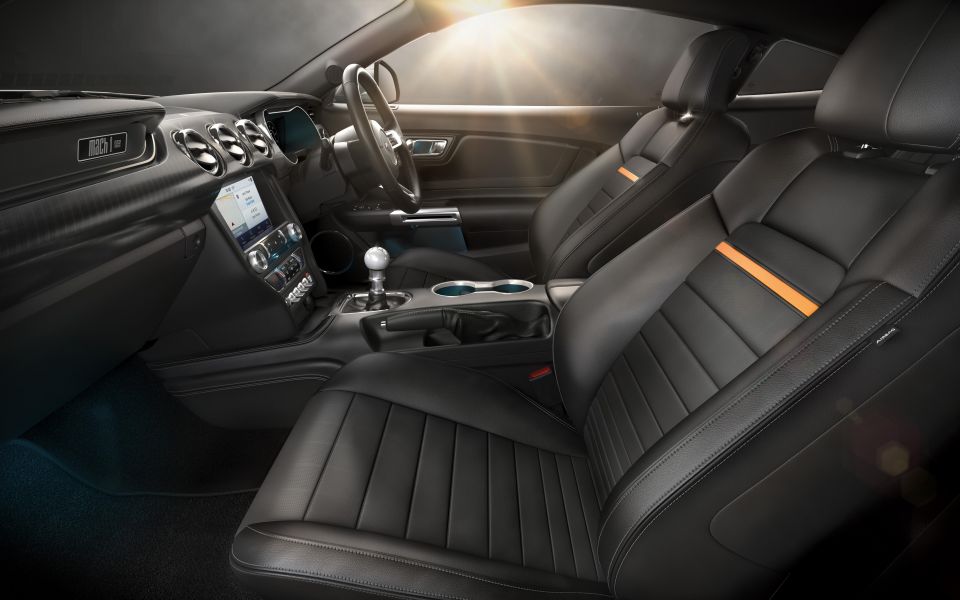
Features carried over from other Mustang models include:
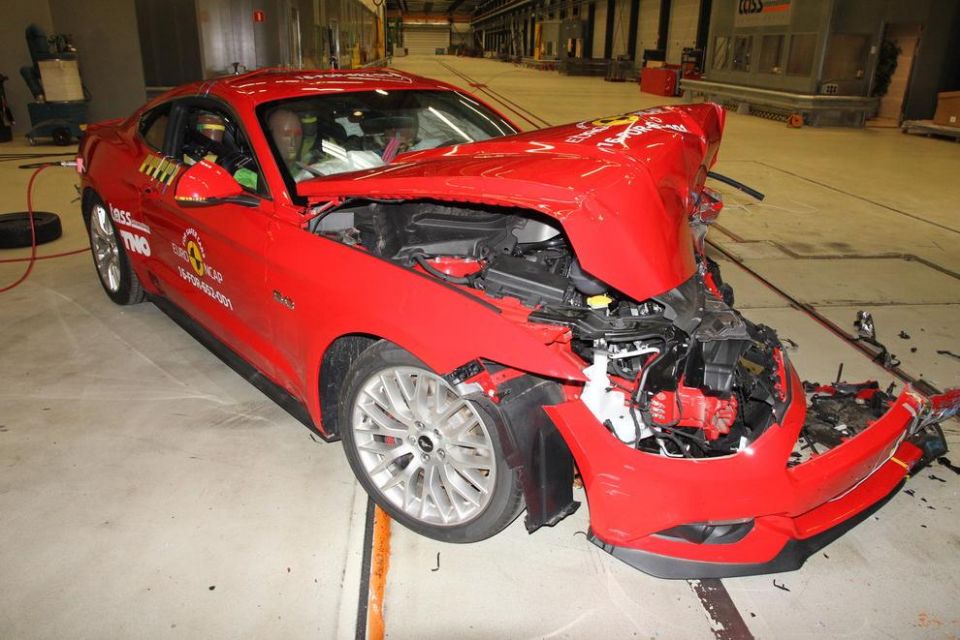
The Ford Mustang recorded a three-star safety rating from ANCAP when it was crash tested in 2017.
It scored 72 per cent for adult occupant protection, 32 per cent for child occupant protection, 78 per cent for vulnerable road user, and 61 per cent for safety assist.
Nevertheless, it gets eight airbags including driver front passenger inflators, side chest, side curtain and knee airbags for both front occupants.
There’s also autonomous emergency braking with pedestrian detection, lane departure warning, lane keep assist, and a tyre-pressure monitoring system.
As we’ve previously reported, the Mustang Mach 1 misses out on some features initially advertised and available on left-hand drive models, including adaptive cruise control and rear parking sensors.

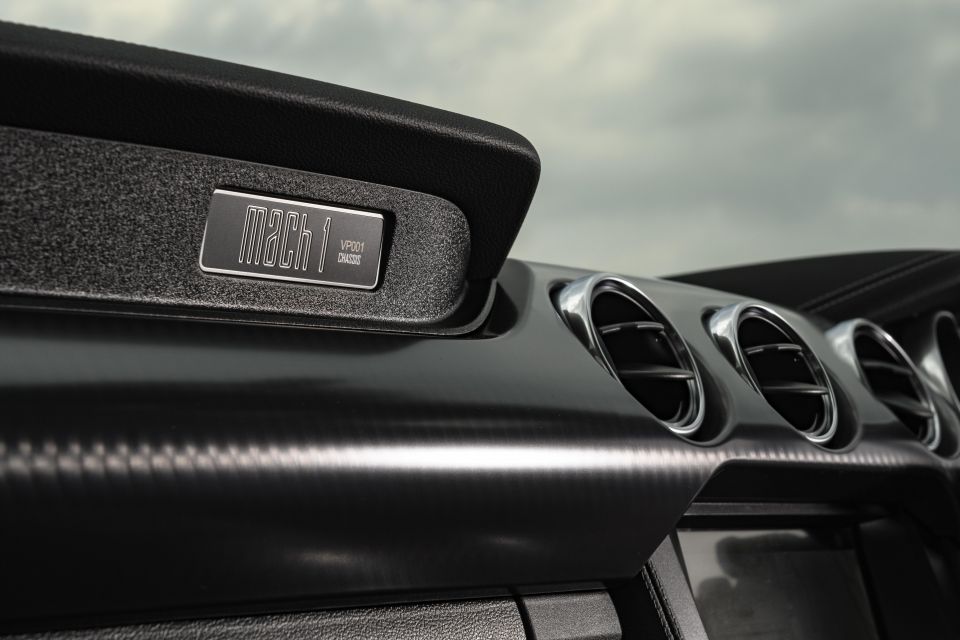
Inside it’s pretty much standard Mustang GT fare, though with the same cue ball shifter shared with the Bullitt, as well as a unique ‘Mach 1’ build plaque with chassis number on the left hand-side of the dashboard.
It might be a limited edition build that costs more than $83,000, but don’t expect anything special inside bar the optional Recaro seats and old-school shifter knob.
Additionally, there’s unique Mach 1 sill plates and specific start-up display on the 12.0-inch digital instrument display. If you go with the standard seats they’re heated and ventilated, as well as features including a 12-speaker 1000W Bang & Olufsen sound system, keyless entry and start, and satellite navigation.
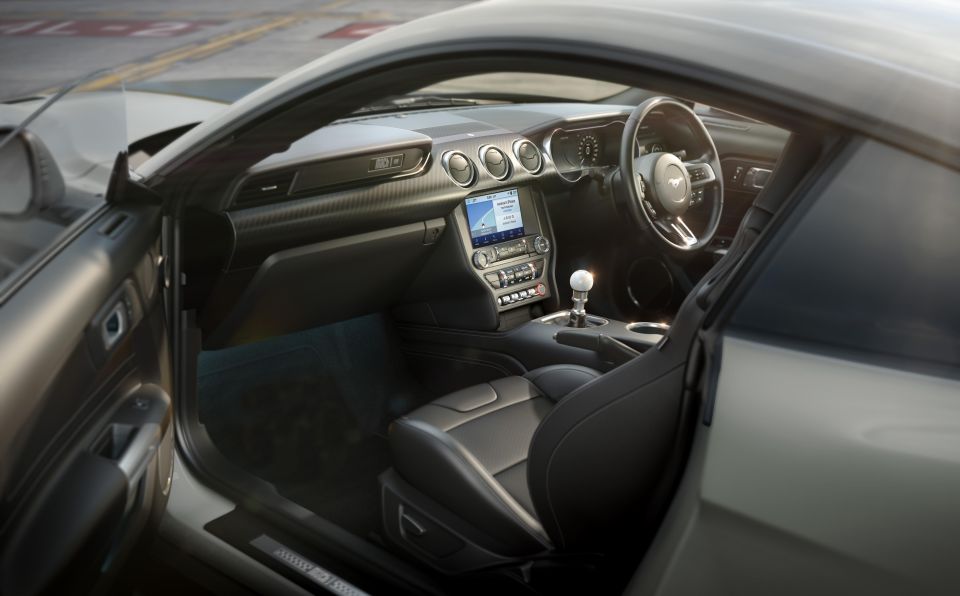
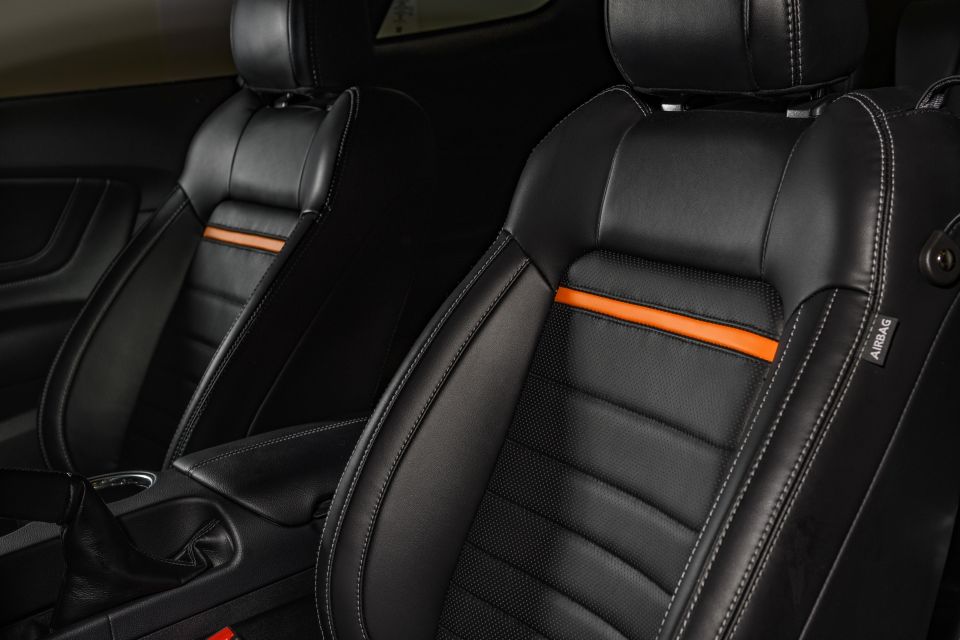

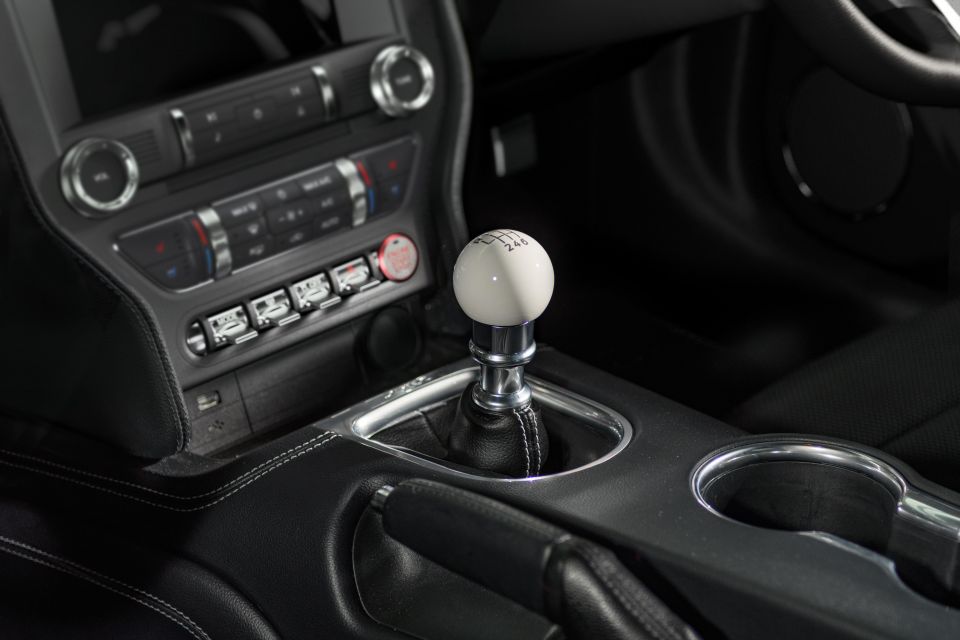
Apart from those Mach 1-specific items, there’s the standard Ford Sync 3 8.0-inch capacitive touchscreen (not particularly high-resolution) but always quick and reliable with Apple CarPlay and Android Auto, dual-zone climate control, ambient lighting, auto wipers and an auto-dimming rear-view mirror.
Choose the Recaros ($3000), and you still get front-to-rear power adjustment for the front seats with embroidery on the seat backs, though this also deletes ventilation for the front pews.
Rear-seat legroom is almost non-existent, even behind my own seat-forward driving position. Kids will even find it cramped back there, but the seats themselves are supportive all round.
In the boot there’s 408 litres of luggage space available, with more length opening up when the split-fold rear seat backs were lowered. There’s also adequate room for phones and keys ahead of the shift lever or in the console bin.
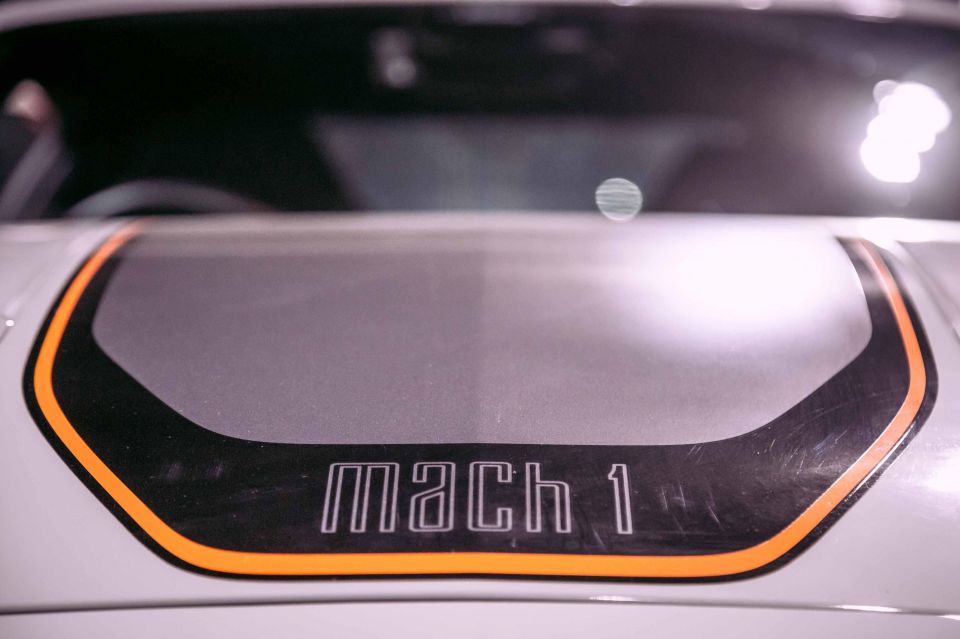
The Mach 1 gets the same upgraded 5.0-litre V8 powertrain as the Bullitt, making 345kW of power (up 6kW on the GT) and 556Nm of torque, but using a wider throttle body and intake manifold from the Shelby Mustang GT350.
Gearbox choices include the ten-speed ZF automatic specially calibrated for the Mach 1, or the Tremec TR-3160 six-speed manual transmission that replaces the Getrag MT-82 in the Bullitt. It’s a more robust gearbox using high-strength steel for all gears and shafts – maximising high torque loads.
While first gear is slightly taller in the Tremec unit, the middle gears are stacked closer together for more rapid progress in the mid-range. It rev-matches perfectly and is strong enough to allow full-throttle shifting.

And, just like the Bullitt, it borrows the open-air induction system, intake manifold and wider throttle bodies from the hardcore Mustang Shelby GT350, thereby boosting airflow into the engine for better throttle response.
Even the engine management software has been recalibrated to handle the higher loads this engine is capable of sustaining.
Cooling on the Mach 1 has been beefed up by adding two side heat exchangers, increasing oil cooling capacity by as much as 60 per cent, as well as extra cooling for the transmission oil and the rear axle.
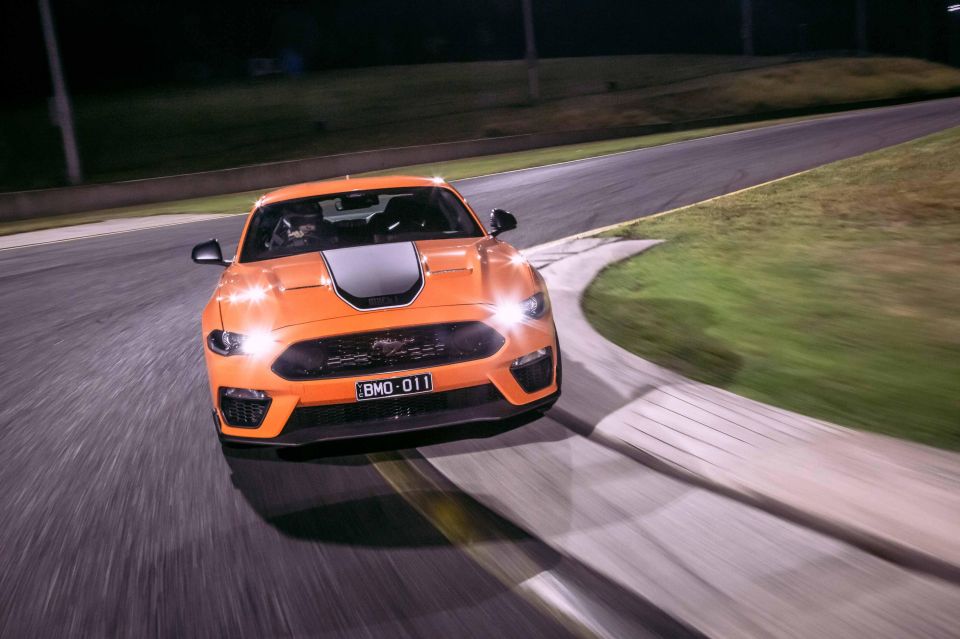
You only have to hit the starter button to realise the Mach 1 is special. The Bullitt is loud but this is louder, with a deeper exhaust note. I can’t get over how good this thing sounds. It’s addictive.
The shift movement itself requires more brute power, but the throw is shorter and more mechanical. The Mach 1 feels like a genuine muscle car but with all the major controls in sync for one of the most visceral driving experiences you’re likely to have this side of $100,000.
There’s more immediacy in the throttle response, and it seems to pull appreciably harder than the Bullitt, especially in first and second gears. It’s a real pity we couldn’t drive the supercharged Mustang Spec-R back-to-back, because the Mach 1 feels just as quick, at least in those lower gears.
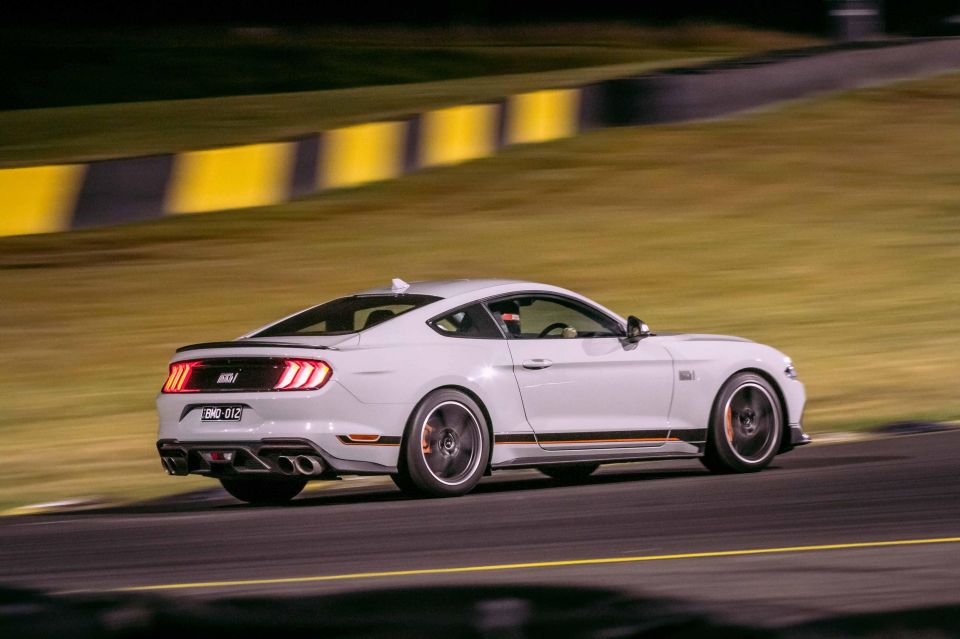
I can’t get over how much more urgent this car feels over the Bullitt. It’s significant, and it keeps on pulling before we run out of road.
There’s better steering feel too, thanks to a new calibration for the Mach 1. Again, it’s noticeably sharper than the standard GT and Bullitt, both of which feel numb by comparison.
There’s proper feedback through the steering wheel now – you can feel what the front wheels are doing, which is a first for me with Mustang, not having driven any of the current Shelby models.
The chassis, too, feels properly pinned down and predictable under solid loads on a brilliant, fast-flowing section of deserted B-road. So much so, you can’t wait to get the car on track, because everything including the brakes all feel so in sync.

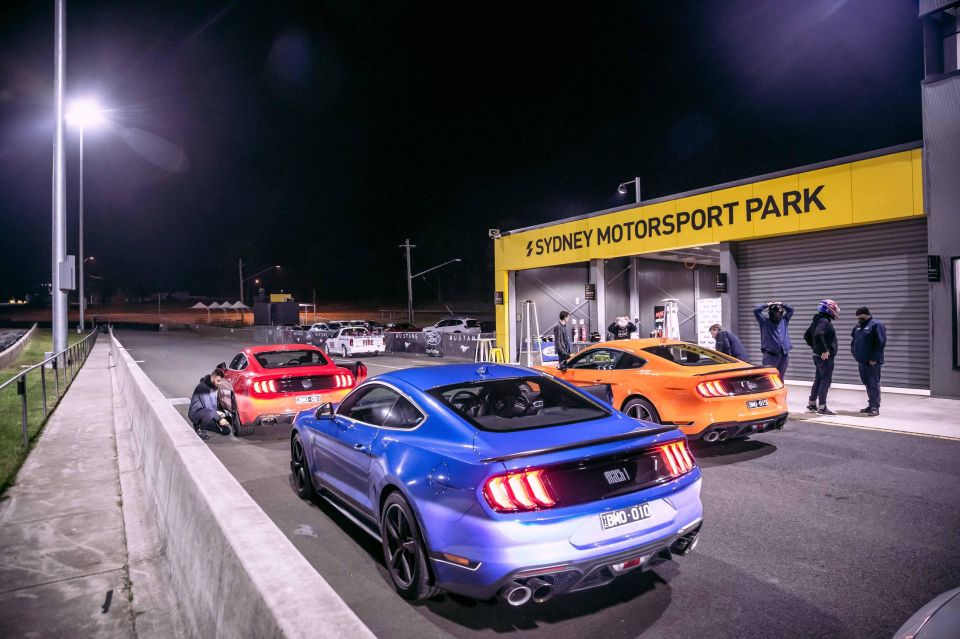
Where expert car reviews meet expert car buying – CarExpert gives you trusted advice, personalised service and real savings on your next new car.
While it might be the most track-focused Mustang ever sold in Australia, ride compliance is no worse off. Put that down to re-tuning of the MagneRide dampers; ride comfort even over course chip bitumen is excellent.
Grip levels are higher in the Mach 1, despite the fact it uses the same size Michelin Pilot Sport 4S tyres, though on slightly larger wheels (up half an inch) on the GT. Likely, it’s down to the chassis balance as much as the rubber, but again, the Mach 1 feels incredibly deft under quick directional changes.
On track, the Mach 1 surprises even more. We sampled the automatic, which is also demonstrably better than in the standard GT, where it has an annoying tendency to hunt for gears up and down the ratios. There’s none of that in the Mach 1 – it holds the gears longer and shifts when you want it to in Sport+ or Race Track modes.

It’s a cold night at Sydney Motorsports Park, and yet cornering performance is brilliant, even when pushed in the hairpins on the South Circuit. It’s the same after more than an hour on track.
It’s also uncanny how composed the Mach 1 in those tight bends. Forgiving, too, when you mess it up and turn in too early. No issues, it just settles and powers out.
It’s just so at home on the track, and that’s after countless laps by a wide variety of drivers at the track event.

The Ford Mustang is covered under a five-year, unlimited-kilometre factory warranty.
Following the confirmation of features missing from right-hand drive models – including the Torsen LSD, adaptive cruise control and rear parking sensors – Ford Australia indicated it would be giving owners of the Mach 1 free scheduled servicing for the first three years of ownership, as well as a complimentary Ford Performance Experience track day. Read more on that here.
Those first three scheduled services would normally be priced at $390, $445 and $545 respectively.
Ford claims combined fuel consumption of 13.9L/100km for the manual and 12.4L/100km for the auto, though all of our test driving was on B-roads and a race track, making indicated fuel consumption figures exceedingly high and not indicative of real-world driving.
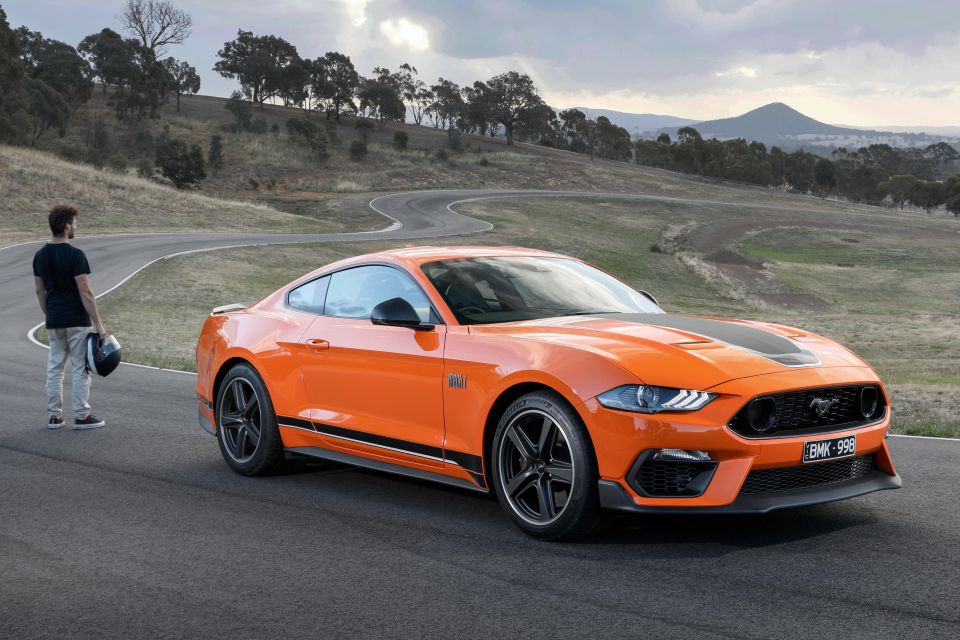
Ford has nailed it with the Mustang Mach 1. This is far and away the best iteration of the Mustang I’ve ever driven. Far more connected than the Bullitt, even.
I simply wasn’t expecting this level of engineering on such a holistic level. It’s the chassis, the balance, the grip, the ride comfort, the high-speed track work, the steering feedback, and the uncanny handling prowess that makes the Mustang Mach 1 such a great driver’s car.
Then there’s the sound. I didn’t think any other Mustang would trump the Bullitt, but the Mach 1 makes even more of a statement in the noise department.
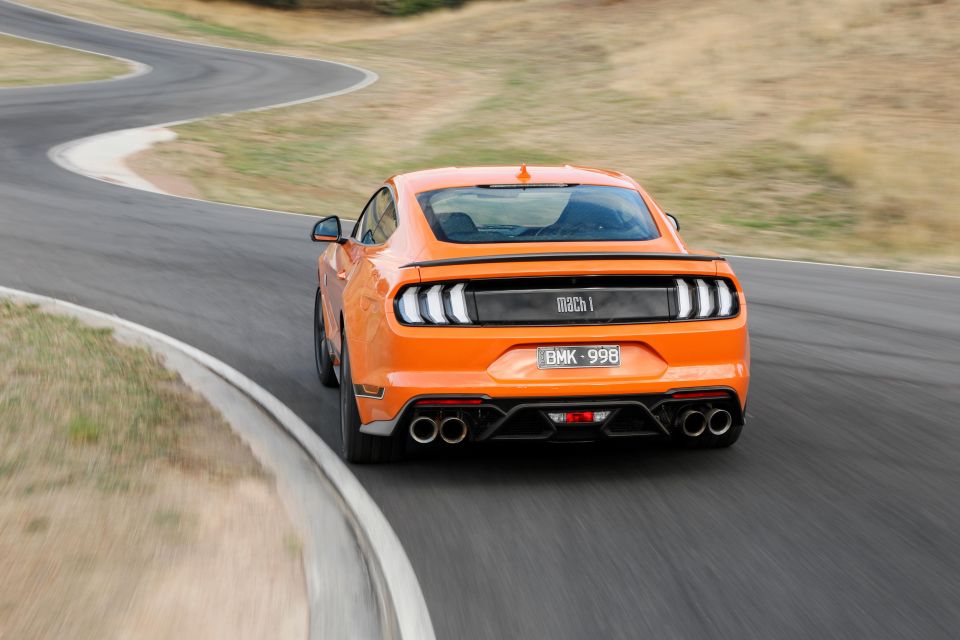
Click the images for the full gallery
Where expert car reviews meet expert car buying – CarExpert gives you trusted advice, personalised service and real savings on your next new car.


Max Davies
4 Months Ago


William Stopford
2 Months Ago
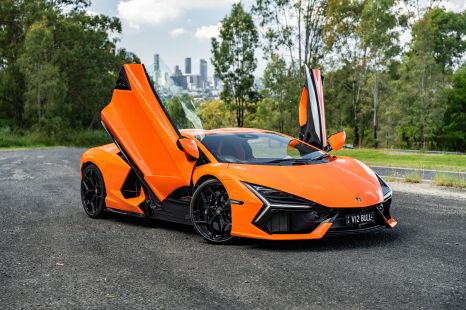

Alborz Fallah
1 Month Ago


James Wong
24 Days Ago


Paul Maric
13 Days Ago
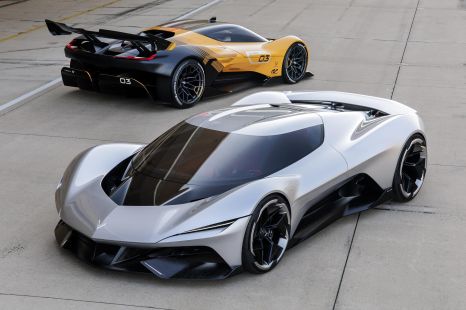

William Stopford
9 Days Ago